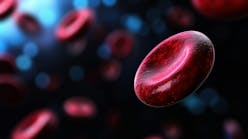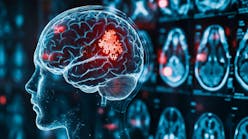Traditionally, histology, immunology, and enzyme assays were used to detect gene product—enzymes or other proteins produced by defective gene(s)—associated with genetic disorders. Molecular testing is increasingly used in place of immuno-histology or enzymology methods to detect and monitor genetic diseases, including: (1) DNA sequence analysis to detect single nucleotide and insertion/deletion polymorphisms (SNPs and DIPs, respectively, associated with cancers and many other genetic disorders), and (2) DNA fragment analysis to detect and quantify genetic variations. DNA fragment analysis using capillary electrophoresis has many applications: detecting deletions and duplications (30% or more of all genetic diseases); prenatal testing to detect aneuploidy; rapid identification of known mutations associated with specific diseases (e.g., cystic fibrosis), which quickly provides valuable information to guide genetic counseling for pre-implantation genetics; and detection and monitoring of donor genotype after bone marrow transplant for treatment of blood disorders such as leukemia.
Leukemia, aplastic anemia, and primary immune deficiency diseases affect significant segments of the patient population. Stem cells or cell lineages of bone marrow malfunction, causing defective blood cells that interfere with normal blood function, and often invading other tissues. Treatments to destroy abnormal cells followed by transplantation of stem cells from compatible, healthy donor tissue have increased the success of treating these diseases. A chimera, an individual composed of two genetically distinct types of cells, results from the transplant. Quantification of chimerism is used to monitor engraftment of donor cells following stem cell transplantation and is essential for early diagnosis of graft failure or relapse of the disease.1
Chimerism analysis using polymerase chain reaction (PCR)-based amplification of short tandem repeat (STR) markers has grown to be the most widely used tool for analyzing stem cell engraftment over fluorescent in situ hybridization (FISH) and other cytological methods.2,3 Not only are the available chemistry kits for genotyping relatively inexpensive, but STR markers are highly polymorphic and increase the chance of finding informative loci for quantitative purposes. An informative locus contains at least one unique allele in the donor or the recipient—an unshared allele that can be used to quantify the contribution of that individual to the chimeric genotype. By using these informative loci, rapid detection and quantification of chimerism level in stem cell engraftment monitoring can be assessed with high confidence. STRs provide the ability to analyze chimerism in human leukocyte antigen (HLA) and/or sex-matched patients that are not suitable for detection using FISH. Most importantly, STR results can be quantified, making it possible to monitor a patient’s chimeric status over time. Early detection of changes in chimeric status in long-term patient monitoring is invaluable for detection of graft rejection or graft versus host disease (GVHD)—alerting medical staff to the possible need of intervention or changes in drug therapy.
In the past, the drawback to using STR analysis for chimerism quantification and monitoring was the cumbersome process of analyzing fragment data—determining fragment sizes, usually in one program, manually determining informative loci, and then transferring results to a spread sheet for quantification and monitoring. The analysis was time-consuming and potentially prone to error, due to the need to transfer information from one program to another. Recent software advances have mitigated these drawbacks to STR monitoring of post-bone marrow transplant patients. SoftGenetics’ ChimerMarker® software automates the entire process, maintains an audit trail and documentation for long term graphing and patient monitoring. Time savings of 30% to 70% have been reported by HLA laboratories in comparisons between this innovation and genotyping/spread sheet analysis methods.
Additional examples of detection and quantification of loci associated with specific genetic disorders using DNA fragment analysis rather than immuno-histology methods include MLPA® analysis (Multiplex Ligation-dependent Probe Amplification)4 to detect genetic diseases caused by duplications or deletions (for example, Duchenne muscular dystrophy) and trisomy analysis of QF-PCR amplicons5 from amniotic fluid.
Sanger sequencing analysis is considered the gold standard by many for clinical diagnostics. As the cost of next-generation sequencing continues to fall, it is increasingly used for clinical research. One application is whole-exome sequencing of families with undiagnosed diseases. Lists of potential causative mutations are generated by looking for specific patterns, such as compound heterozygous inheritance. A list of thousands of variants can be narrowed down by ignoring likely false positives and by focusing on mutations that are expected to be damaging based on functional prediction scores, like those in the Single Nucleotide Polymorphism database (dbSNP).6
References
- Scharf SJ, Smith AG, Hansen JA, McFarlandC, Erlich HA. Quantitative determination of bone marrow transplant engraftment using fluorescent polymerase chain reaction primers for human identity markers. Blood. 1995;85:1954-1963.
- Thiede C, Lion T. Quantitative analysis of chimerism after allogeneic stem cell transplantation using multiplex PCR amplification of short tandem repeat markers and fluorescence detection. Leukemia. 2001;15:303-306.
- Kristt D, et al. Quantitative monitoring of multi-donor chimerism: a systematic, validated framework for routine analysis. Bone Marrow Transplantation. 2010;45:137-147.
- Schouten JP, et al. Relative quantification of 40 nucleic acid sequences by multiplex ligation-dependent probe amplification Nucleic Acids Res. 2002:30(12):e57
- Hamilton S, Mann K. QF-PCR for the diagnosis of aneuploidy. Best Practice Guidelines v2.01. Association for Clinical Cytogenetics. 2007.
- Liu X, Jian X, Boerwinkle E. dbNSFP: A lightweight database of human nonsynonymous SNPs and their functional predictions. Human Mutation. 2011;32:894-899. doi:10.1002/humu.21517.
Teresa Snyder-Leiby, PhD, is Product Manager for Pennsylvania-based SoftGenetics LLC.





